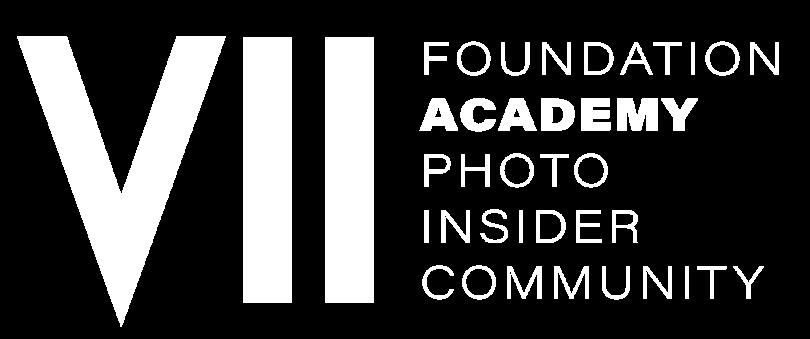VII Academy





The VII Foundation‘s mission is to transform visual journalism by empowering new voices and creating stories that advocate change. In a world where beliefs and actions are increasingly out-of-sync with facts and realities, transforming visual journalism is an urgent task.
The VII Foundation trains and equips emerging visual journalists from communities underrepresented in the media. These practitioners have a front-seat perspective on urgent challenges that concern us all. The VII Foundation teaches essential skills and strategies to ensure the truth is documented and made availableto a global audience seeking to make decisions and choices based on facts, not hearsay.
Our training is tuition-free and conducted by leading professional journalists who have worked for decades on the frontlines of some of our societies’ most complex and difficult challenges. In this era of an underfunded, dying global media enterprise, our trainees help ensure the global conversation continues and is fuelled by first-person reporting vs. unsourced, uncredited rumors and factual manipulation. In addition to empowering over 1,200 new voices in journalism from more than 100 countries, we host public conversations and critical debates that ask tough questions about the context, purpose, and impact of images. We create largescale and long-term documentary projects, exhibitions, and films that reveal complex realities; advocate for change; and serve as resources for policymakers, the public, and journalists worldwide.
To deliver our mission, we have an educational stream of three initiatives - VII Academy, VII Community, and VII Insider.

VII Academy provides tuition-free courses in visual journalism to practitioners in the Majority World and underrepresented communities in G20 countries. VII Academy is democratizing the information narrative and giving communities the tools to narrate their own stories in regions where media education is poorly resourced.
In the last four years, VII Academy has trained over 1,200 people from 100 countries in nine languages, with more than half of them identifying as female.
VII Academy training is structured as a pathway from the first point of contact to high-level practice. It is done online or in person at campuses in Arles, France, and Sarajevo, Bosnia Herzegovina. VII Academy has three programs:
• The Program for Narrative and Documentary Photography, with courses at Level 1, Level 2, and Level 3
• VII Mentor Program, which provides a 12-month structured professional environment for emerging new talents in the industry
• The MA in Visual Journalism, in partnership with the Faculty of Political Sciences at the University of Sarajevo, is a two-year course beginning in 2024-25. The MA program will also have a one-year Certificate in Visual Journalism option
In addition, VII Academy partners with like-minded organizations to provide additional, focused training initiatives. VII Academy’s programs are enabled by the generous support of our partners, especially The William, Jeff & Jennifer Gross Family Foundation, PhotoWings , Canon, Creative New Zealand, the Foundation for Systemic Change , Leica, and the Poklon Foundation.
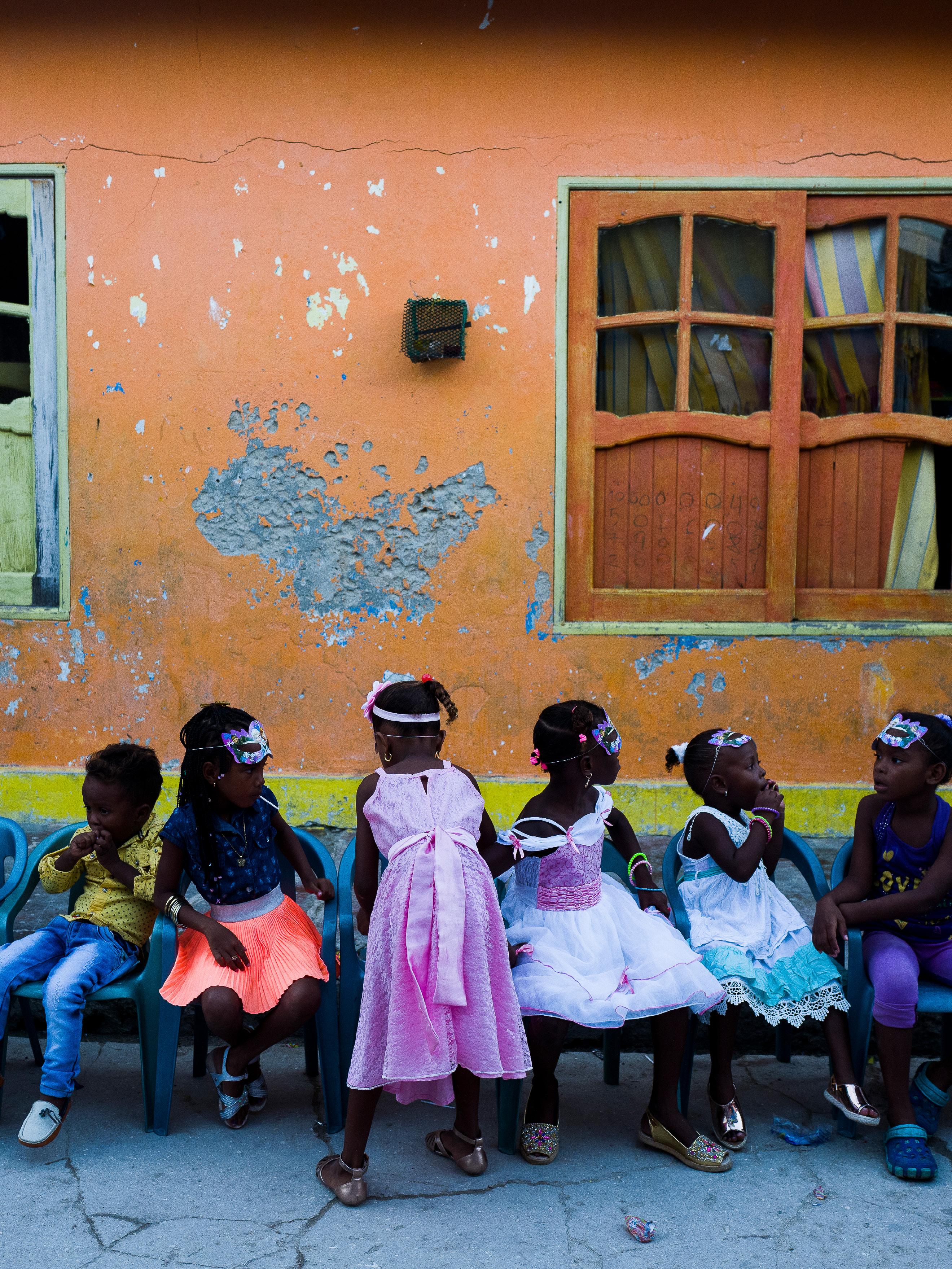
(a) Level 1 caters to students with basic photography experience who want to become visual journalists. It provides a solid foundation of practical skills, including camera control, fulfilling a brief for commissions, and writing captions. It also introduces good practices in ethics, video, social media, and running a solo business. Level 1 is taught via a 12-week online seminar for ten students at a time, with at least nine Level 1 courses each year.
(b) Level 2 takes the best students and equips them with additional skills, extending the concepts from Level 1 and adding a writing component taught by a writing tutor. Level 2 is taught via a 12-week online seminar for ten students at a time, with two Level 2 courses each year.
(c) Level 3 takes the most accomplished students from Level 2 and brings them free of charge to the foundation’s Alexandra Boulat Campus in Arles for an intensive, interdisciplinary, in-person, month-long program. After their time with us, they go home as accomplished practitioners who are well-versed in contemporary media ethics and journalistic values and can take on complex assignments for leading media, NGOs, and corporations worldwide.
Second, the VII Mentor Program provides a structured professional environment for emerging new talents in the industry, whether trained by VII Academy or not. The program – the first of its kind –was launched by VII Photo Agency in 2008 and is now managed by VII Academy. This hybrid program pairs ten selected visual journalists with experienced VII photographers. It runs online for 11 months, followed by two weeks in-person in Arles during the professional week of the Rencontres d’Arles festival. The VII Mentor Program has nurtured the careers of many visual journalists who have become leading practitioners.
Third, the MA in Visual Journalism, developed in partnership with — and accredited by — the Faculty of Political Sciences at the University of Sarajevo, is a two-year course that will begin in 2024-

2025 and cap VII Academy’s pathway, providing a higher education qualification for those who want to work as documentarians, curators, editors, and university lecturers. The MA program will also have a one-year option, offering a Certificate in Visual Journalism to those practitioners who don’t have a BA degree and/or do not wish to complete a thesis project. The course will be fee-paying and open to all, with scholarships for students from the Majority World.
Education Partnership: Nature Through Her Eyes
VII Academy works with Jacqueline Farmer to mentor female African filmmakers so they can document their vision of natural history. This partnership began because we jointly identified a problem, proposed a training solution, and set up a mentoring system. As a result, we have developed new capacity that produces new perspectives.
The NTHE partnership trained the first female African marine biologists to swim and film underwater. In September 2022, it taught natural history filmmaking to emerging Senegalese filmmakers. In November 2022, the second NTHE festival was held in Cape Town, supported by the French and South African governments. NTHE trainees are being commissioned for documentary projects in Asia and Africa.
Nature Through Her Eyes continues to mentor and train Erica Rugabandana. Erica is Tanzania’s first woman long-lens wildlife camera operator and director, following prolonged training on camera and documentary writing and production with the NTHE team.
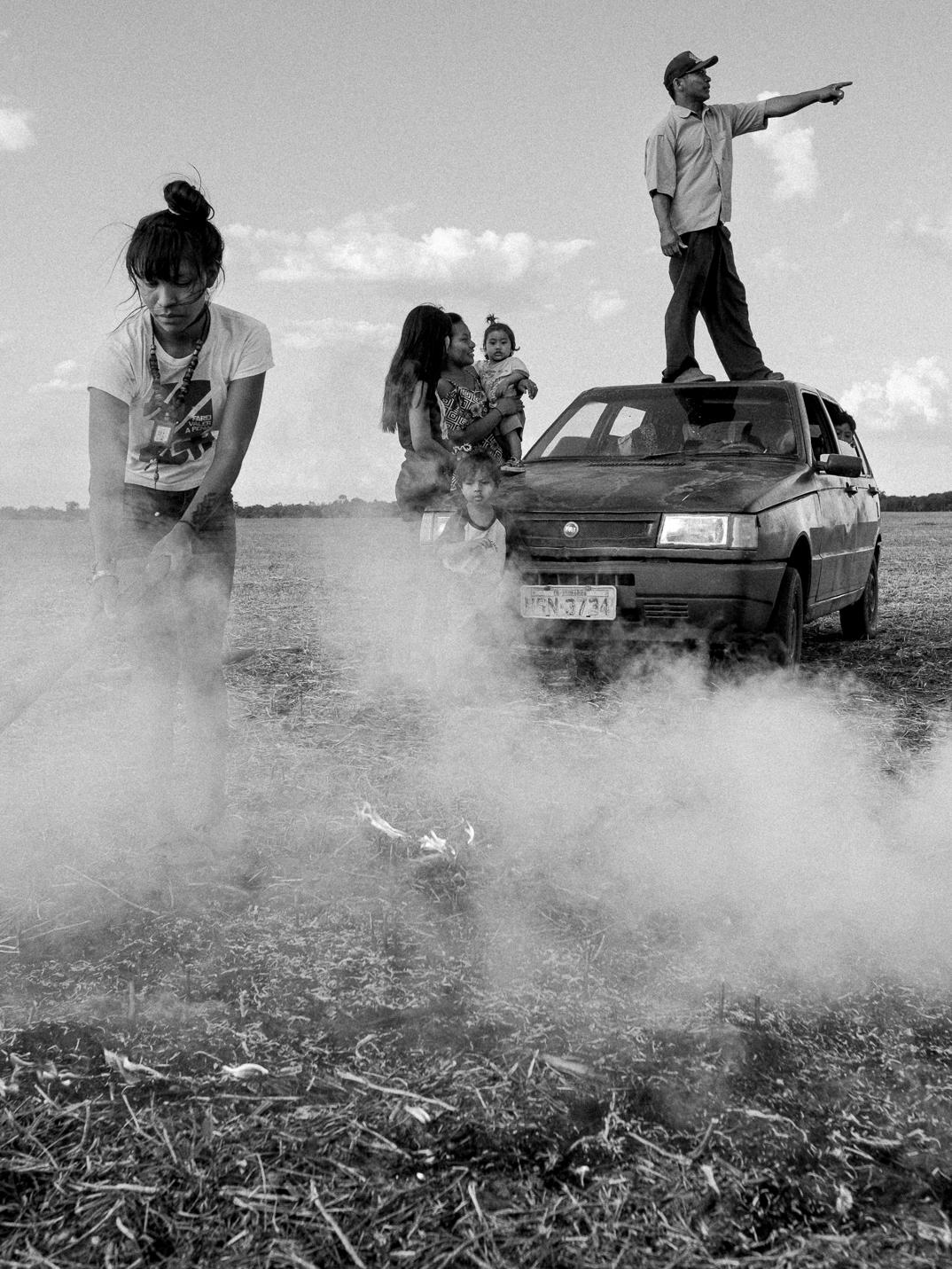
In June 2023, she finished her first feature documentary Kuishi na Simba (Living with Lions), which achieved global release after winning Best of Festival, Best African Film, and Best Storytelling at Pridelands Film Festival in Nairobi.
Foundry Photojournalism Workshop was established in 2008, and since 2019 it has been led by PhotoWings and supported by VII Academy.
The Foundry Photojournalism Workshop is an event that focuses on teaching participants about visual voice, lessons from the field, the creative process, how to work with photo editors, and general business practices.
In the latest edition, over 90 students from 40 Majority World and underrepresented communities in G20 countries participated in the online event. Foundry offers a unique opportunity for participants to learn from some of the world’s most respected photojournalists and photography professionals. In the 2023 edition, eleven instructors taught in nine different languages in a series of classes and one-to-one sessions. Portfolio reviewers from national and international press, galleries, and agencies also provided valuable advice.

VII Community
In the foundation’s education pathway, ongoing support for our alumni is a vital task. To this end, we created VII Community in partnership with PhotoWings .
VII Community is a network of VII Academy alumni and Foundry participants that number more than 1,000 professionals. It supports those who have completed our courses with connections to the profession through online discussions, presentations, reviews, in-person global meet-ups, and a Discord platform for regular exchanges.
“I find myself browsing the VII Community channels all afternoon. It’s a treasure trove of inspiration and motivation.
I love how many resources I can get in one place, and more keep coming. Book recommendations, alumni websites, grant opportunities, amazing events, portfolio reviews, and everything related to documentary photography that you usually can’t find easily. It’s a comprehensive documentary photography resource out there. I love it.”
|
VII Academy student and VII Community member
The foundation seeks to elevate the public conversation about visual journalism. For this, we have VII Insider, our free online platform for debate that takes the general audience inside the profession of visual journalism to advance the production and analysis of photography, documentary stories, and visual journalism. Our partnership with PhotoWings makes VII Insider possible.
VII Insider brings people together to see creative presentations, learn from experts in the field, and read analyses of visual journalism. VII Insider offers regular live presentations, an extensive and searchable video collection of more than 120 previous events, and publishes the best writing on the role of images in Dispatches: The VII Insider blog (with 45 articles on Substack and new posts every month).
“The VII Insider programme is truly excellent. I’ve been on many of the sessions, and have just recently been viewing Christopher Morris’ videos on his early photojournalistic experiences, and they have all been truly wonderful. Interesting, insightful and inspiring.”
| VII Insider audience member



Marton Monus (Hungary): Attended Eastern Europe: Program for Photojournalism and Documentary Photography in 2020.
“I started working for Reuters in the same year I completed the Level 1 course (2020), and a year later, I also started to cover events for the German dpa. In addition to the two big agencies, I covered the consequences of the war in Ukraine and Hungary for several Western European newspapers. I started one of my favorite longterm projects during this course. In summary, it was motivating and helped me focus on my own projects.”
LuisEnrrique Becerra (Peru):
Attended South and Central America: Program for Photojournalism and Documentary Photography Level 1 in 2023.
“I have begun challenging my questions about representation and evidence in my projects. The course allows documentary visual makers to explore the limits and plasticity of the visual, where the real, the evidence, and the factual are debated. Later in the course, we moved on to the concept, the proposal, and the discourse - what is thought or believed to be ‘real.’”
Andjela Petrovski (Serbia): Attended Sarajevo Seminar for Narrative Photography, first generation, in 2019.
“The course served as a catalyst for me to embark on three personal photo projects, allowing me to explore and express my creative vision in new ways. One of the major milestones I achieved was reviving and successfully managing my own photo magazine, ‘Balkanium.’ The most impactful change, however, was the shift towards establishing my freelance business. Before the seminar, I had a fulltime job, but post-seminar, I found a way to sustain myself through photography. The education I received expanded my technical abilities and equipped me with the tools necessary to navigate the business side of photography.



Hesham Youssef (Egypt): Attended Photopia x VII Academy Photojournalism and Documentary Photography Level 1 in 2022.
“I had the opportunity to exhibit part of my work at ‘Luxembourg Streetphoto Collective’s Slide Night’ by screening some of my photos in a slideshow reflecting on my experience after moving from Cairo to Luxembourg.”
Leonard Bircu (Romania): Attended Southeast Europe: Program for Narrative and Documentary Practice, Level 1 in 2023.
“Engaging with fellow participants and professionals provided a valuable networking platform. Building connections within the industry has opened doors for collaboration and potential opportunities to showcase my work. I now feel more confident applying various techniques, such as composition, lighting, and framing, to capture compelling and authentic moments in my work.”
Mumin Gul (India): Attended South and Southeast Asia: Program for Narrative and Documentary Practice, Level 1 in 2023.
“My confidence increased significantly. I realized I could create a really good documentary photo project if given the right time and guidance. For the first time in my life, I submitted the project for many awards, which was a novel experience for me.”



Israel Fuguemann (Mexico): Attended Central and South America: Program for Narrative and Documentary Practice, Level 1 in 2023.
“The level 1 course helped give me security and confidence in my photographic work, but mainly, it was a good experience to understand how to approach more solid and editorially interesting photographic projects; it also gave me a more realistic approach to the professional photojournalism industry.”
Kashmir): Attended South and Southeast Asia: Program for Narrative and Documentary Practice, Level 1 in 2023.
“The intense 12-week training pushed my boundaries and helped me leave my comfort zone to shoot and make pictures. It made me more confident in my understanding of this field. As part of a women’s photo collective in Kashmir (Her Pixel Story), I can now share the key skills I learned from L1 with them.”
Juan Páez (Colombia): Attended Canon Miraisha and VII Academy: L’Histoire Du Monde Á Travers Votre Objectif in 2021.
“I’ve expanded my range of offerings for different approaches to working with images, which addresses more research, as I receive more projects in video format that go to organizations such as NGOs. I can only be grateful for this kind of space that helps to encourage critical thinking in the production of images. After Level 1, after the advice of my classmates, I was chosen by the Gabo Foundation to be the winner of one of the New Narratives on Drugs research grants with the story “The Promise of Medical Cannabis” published in three chapters in the digital newspaper El País America.”



Anonymous: Attended the first in-person Program for Narrative and Documentary Practice, Level 3 in 2023.
“The quality of the content presented was exceptional. Renowned photographers and industry experts associated with the VII Foundation shared their extensive knowledge and experience in the field. Their presentations were thought-provoking, filled with captivating visuals, and accompanied by in-depth discussions. The seminar provided valuable insights into the art of documentary photography, storytelling techniques, and the importance of ethical storytelling practices. The content not only met but exceeded my expectations by offering practical knowledge and inspiring examples that I could apply to my own work.”
Anonymous: Attended the first in-person Program for Narrative and Documentary Practice, Level 3 in 2023.
“In conclusion, the L3 seminar on photography and documentary narrative practice with the VII Foundation surpassed my expectations in every aspect. The seminar’s relevance, high-quality content, interactive format, efficient organization, and networking opportunities made it an outstanding and rewarding experience. I left the seminar with newfound knowledge, inspiration, and a stronger foundation in the art of visual storytelling.”
Anonymous: Attended the first in-person Program for Narrative and Documentary Practice, Level 3 in 2023.
“Overall, the L3 photography and documentary narrative practice course has been transformative for my professional growth. It has equipped me with the technical skills, ethical understanding, artistic inspiration, and critical thinking abilities necessary to excel in the field of documentary photography. By honing my abilities as a visual storyteller, I am now better prepared to capture and convey meaningful narratives that have the potential to create positive change and impact.”
©Kimberly dela Cruz for VII Academy Fellows ©Sharafat Ali for VII Academy Fellows ©Natalia Neuhaus for VII Academy Fellows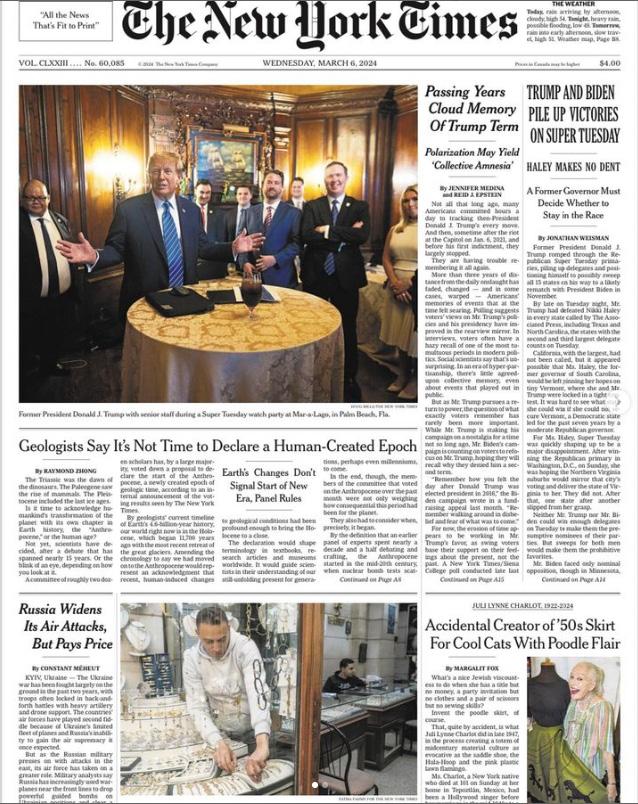
 1. Fatma Fahmy featured on the front page of The New York Times, 2024
1. Fatma Fahmy featured on the front page of The New York Times, 2024
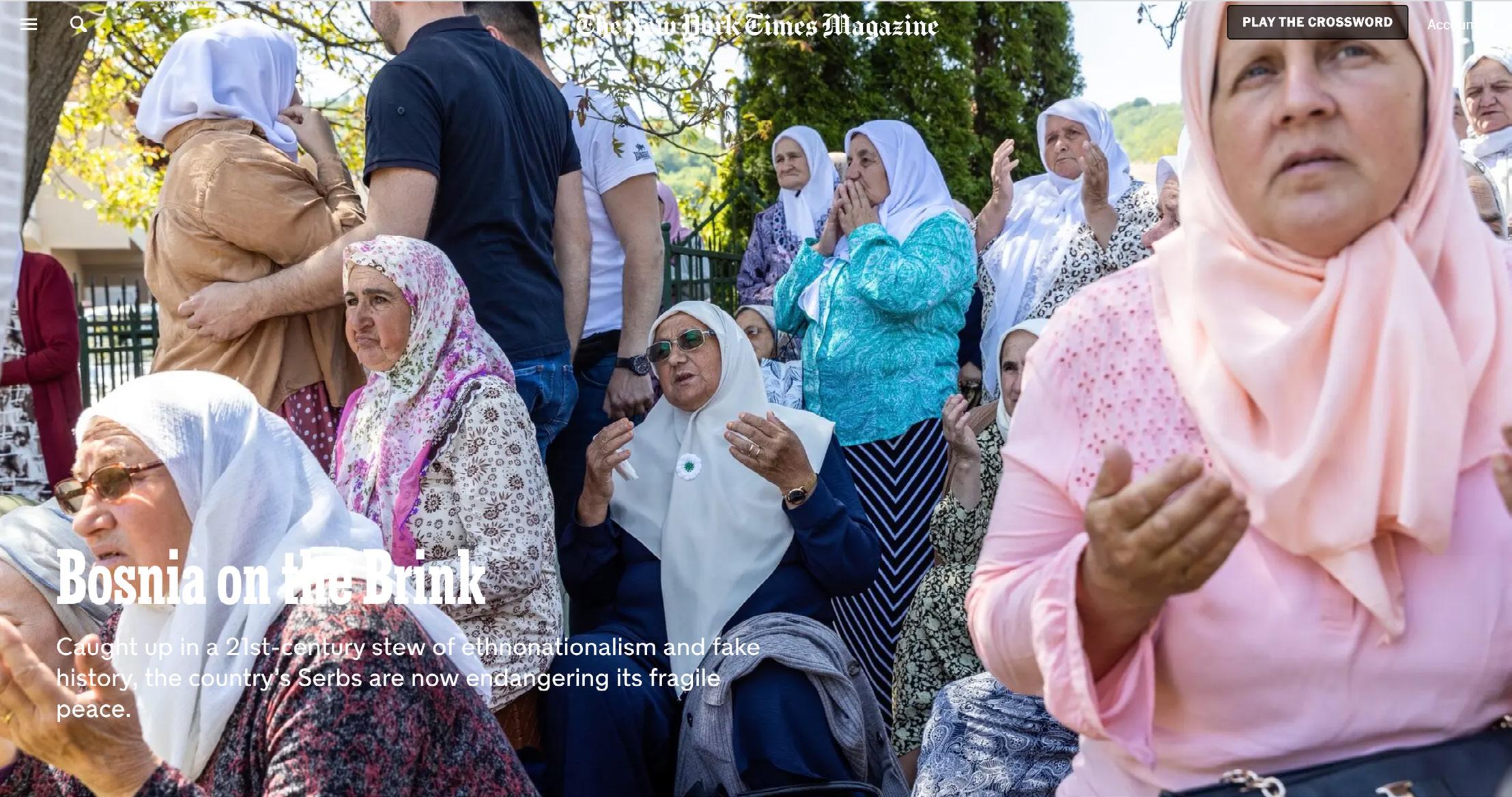

Über Jahre begleitete der Dokumentarfotograf Mitar Simikic eine Familie im Nordosten von Bosnien und Herzegowina, die der Krieg in Armut gestürzt hat. Von den Roma lernen sie, wie man durch Müllsammeln überlebt. Doch Tochter Mila will mehr vom Leben.
1. Marko Risovic featured in The New York Times Magazine, 2022
2. Joshua Irwandi featured in National Geographic, 2020
3. Mitar Simikic featured in Doctors Without Borders Magazine, 2023
4. Mitar Simikic featured in Doctors Without Borders Magazine, 2023
der sich nicht über den Müll im Hof beschwerte und der sich so verhielt, als wäre es ganz normal neben einer RomaSiedlung zu leben und Kupferdrähte auseinander zu dröseln. Mir erschien das Leben dieser Menschen, die trotz ihrer Armut unerschütterlich gefasst waren, spannend. Wenn ich sie fotografierte, schienen sie eigentlich mich vor der Linse zu haben. Ich war ihr Ereignis. Sie der Planet ich der Astronaut. Vater Ahmo und Mutter Melvida fielen mir zum ersten Mal im Jahr 2014 auf, als sie neben ein paar Mülltonnen parkten. Zwei Wochen später sah ich sie wieder. Ich kam gerade von einer Messe, war elegant angezogen und hatte das Gefühl: Jetzt sprichst Du sie an. Sie sahen mich verwundert an – was wollte dieser schicke Typ? Doch sie gaben mir ihre Adresse und Telefonnummer und drei Tage später reiste ich das erste Mal ins Universum Salihovic.
Die Familie lebt in der Stadt Bijeljina in der Republika Srpska im Nordosten von Bosnien und Herzegowina, dicht an der Grenze zu Serbien und nahe meinem Heimatort Ugljevik. In dem Viertel sind die meisten Leute Roma. Ahmo erzählte mir, dass er schon seit 20 Jahren Dinge aussortierte, die andere Leute wegwarfen. Eigentlich war er Maurer, doch dann kam der Krieg, der von 1992 bis 1995 dauerte. Auch danach blieb es schwer, sein Handwerk auszuüben. Als die Leute ihn immer öfter nicht bezahlten und die Aufträge weniger wurden, schaute er sich bei den Nachbarn ab, wie man Geld verdient. Viele glauben deswegen, dass die Salihovic Roma seien. Aber das stimmt nicht. Sie sind eine muslimische Familie. Sie haben von den Roma lediglich gelernt, wie man die Kunst des Überlebens zum Alltag macht. Ahmo wurde ein Self-MadeMan. Wenn man putzen gehe, bekomme man zwölf Euro, hat er zu seiner Frau gesagt, aber wenn man Abfall sammele, trenne und ordne, aus etwas Gebrauchtem etwas Neues mache, dann könne man in der Woche hundert Euro verdienen. Mit diesem Geld kann Melvida weiterhin Burek und Pita in den Ofen schieben und die Stromrechnung bezahlen. Dieses Genügsame wollte ich erkunden. Ahmo erzählte mir, dass er Metall und Plastik sehr aufmerksam sammelt und mit viel Geduld auseinandernimmt.

Wie das
aussehen könnte, auf das Vater Ahmo im Winter aus dem Fenster blickt, oder wie man in der Roma-Siedlung gleich nebenan lebt. 2019 habe ich erneut angefangen, die Familie Salihovic zu fotografieren – dieses Mal im Rahmen eines Stipendienprogramms der Akademie für narrative und dokumentarische Praxis in Sarajevo. Dabei hatte ich das Gefühl, eine andere Sichtweise finden zu müssen, um Milas Geschichte zu erzählen. Ich wechselte das Format und verwende seitdem nur noch das Quadrat. Die Informationen links und rechts im Querformat sind oft überflüssig. Mila ist ein sehr anschauliches Beispiel für eine Gesellschaft, in denen einige nur wenige Chancen bekommen. Mein Hintergrund in Grafikdesign hat mir dabei geholfen, ihr Gesicht abzubilden, als sie sich nicht mehr fotografieren lassen wollte. Ich suche nun nach anderen Methoden, um Einblicke in ihre Realität zu geben und zeige Details. Ich „verstecke“ einen Teil, kann aber vielleicht gerade dadurch die Vorstellung der Betrachter öffnen. Wenn ich etwa Milas künstliche Wimpern fotografiere, dann zeigt das ihre Wünsche, aber eben auch ihre Scheu. Ich kann mich gut erinnern, wie ich selbst
im
in ihrem Alter Scham empfunden habe, wie ich mich ständig fragte, wie ich auf andere wirke. Samilas Ohrringe fotografierte ich vor einem Spiegel – als Symbol dafür, dass wir uns reflektieren. Manchmal zeichne ich die Welt aus Milas Perspektive, von innen nach außen. Ich zeige ihre rauchenden Schwestern, ihre Mutter wie sie vor den gewaschenen Tüchern steht, oder das Kätzchen in Milas Hand. Ich mache das alles sehr langsam, ich bin kein Reporter mehr. Ich erzähle jetzt dokumentarisch – man könnte fast sagen auf analoge Art – obwohl meine Kamera digital ist. Mila hat als einzige unter den fünf Geschwistern eine höhere Schule besucht, eine Landwirtschaftsschule. Die anderen Mädchen haben geheiratet. Als ich sie als Elfjährige kennenlernte, hat sie mich mit Fragen gelöchert, gern gelesen, geschauspielert, Fußball gespielt. Mila hat nicht auf ihre Schwestern gehört, die meinten, man brauche nicht mehr Bildung als die Grundschule. Für das letzte Schuljahr bräuchte sie nun 500 Euro. Doch weil ihr Vater Ahmo vor Kurzem gestorben ist, kann sich die Familie das nicht mehr leisten. Daher arbeitet Mila jetzt ein paar Stunden in der Woche für die NGO „Zora-Morgenröte“. Dort unterrichtet sie Roma-Kinder in Lesen und Mathematik.


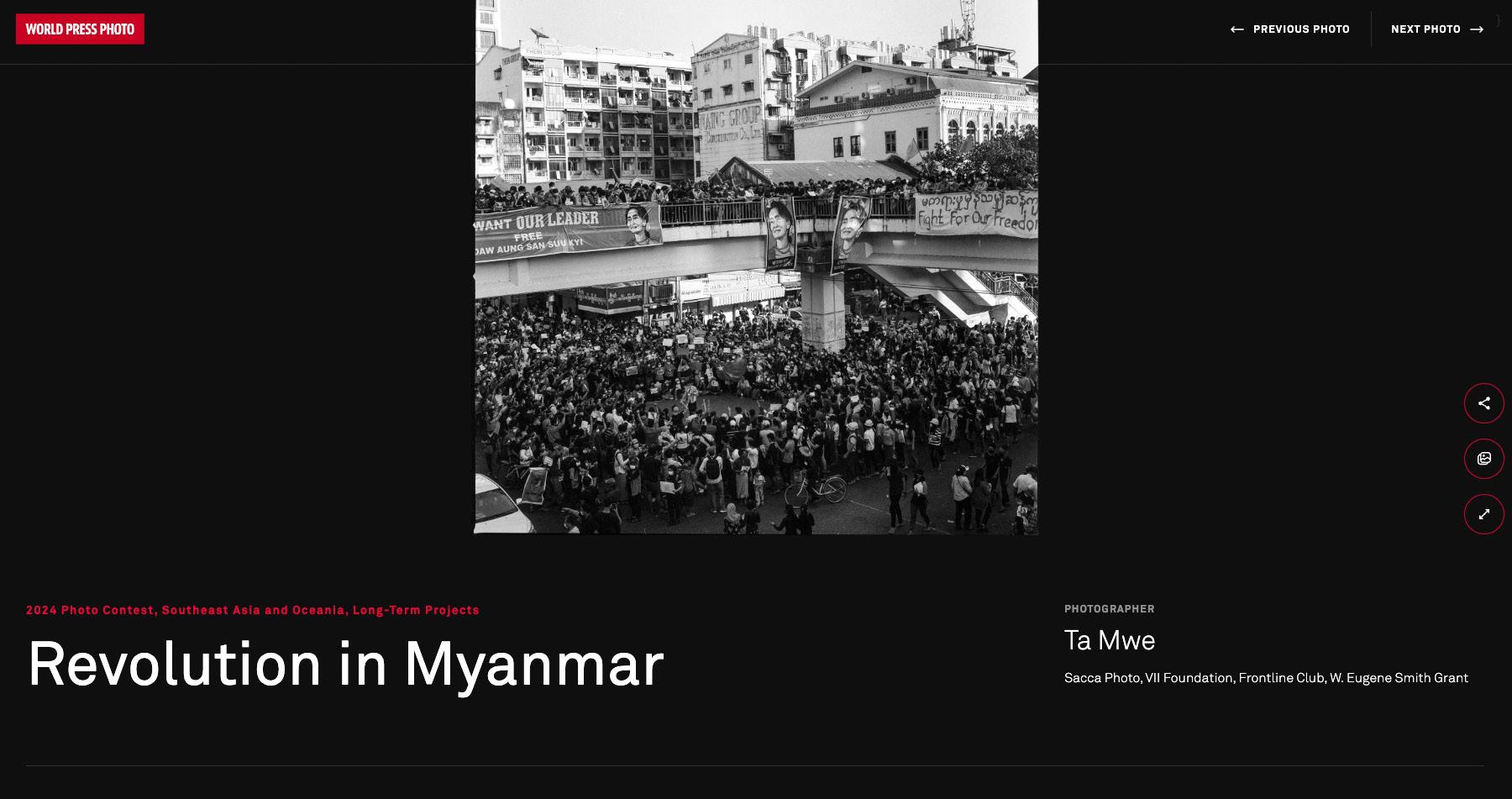
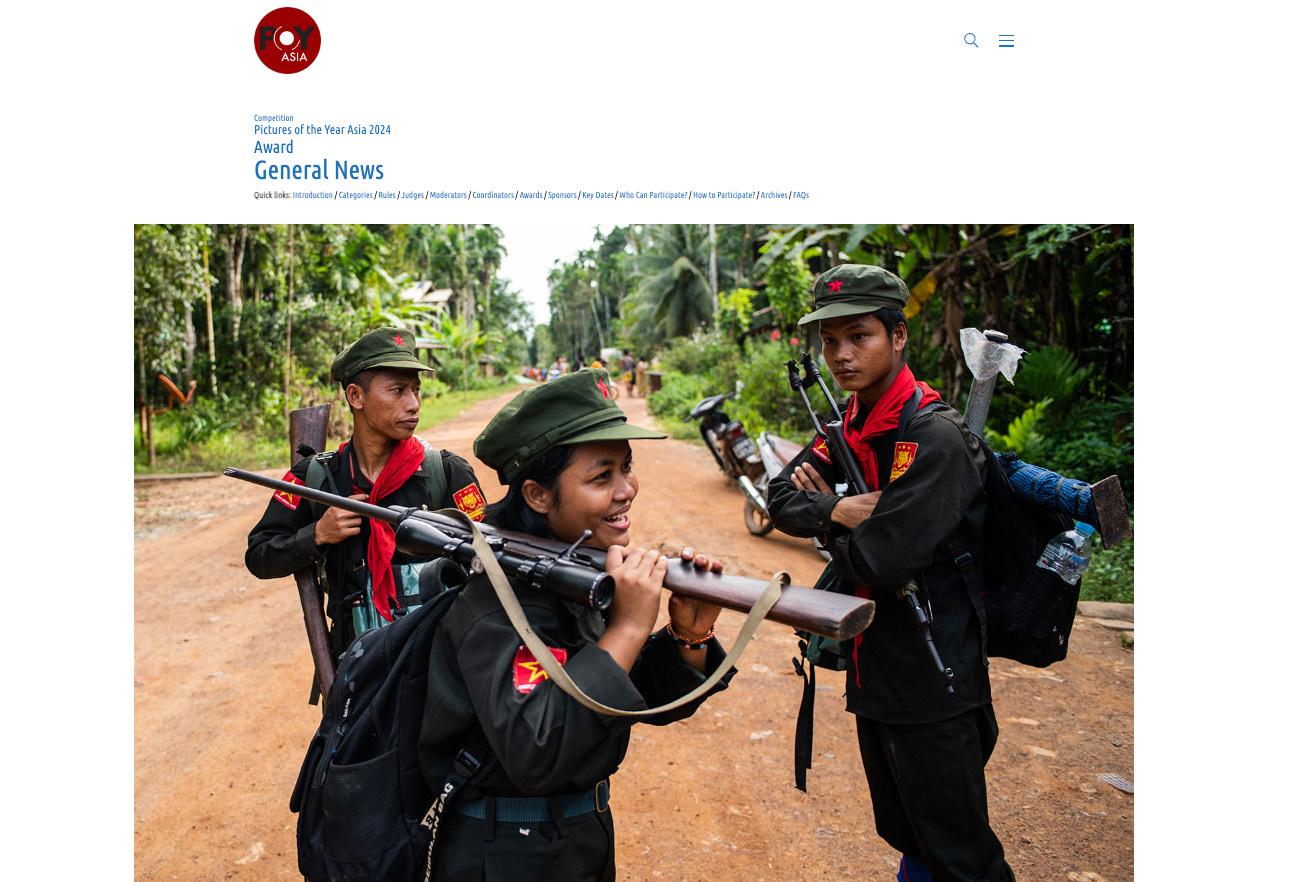
1. Uma Bista featured in The New York Times, 2024
2. Ta Mwe receives the Southeast Asia and Oceania Long Term Projects award in the World Press Photo Foundation 2024 Contest.
3. Mar Naw announced as a finalist in the 2024 Pictures of the Year Asia award
4. Renaud Philippe featured in The New York Times, 2024








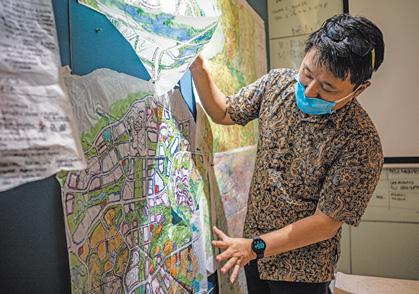
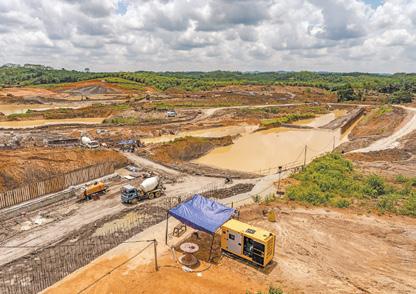


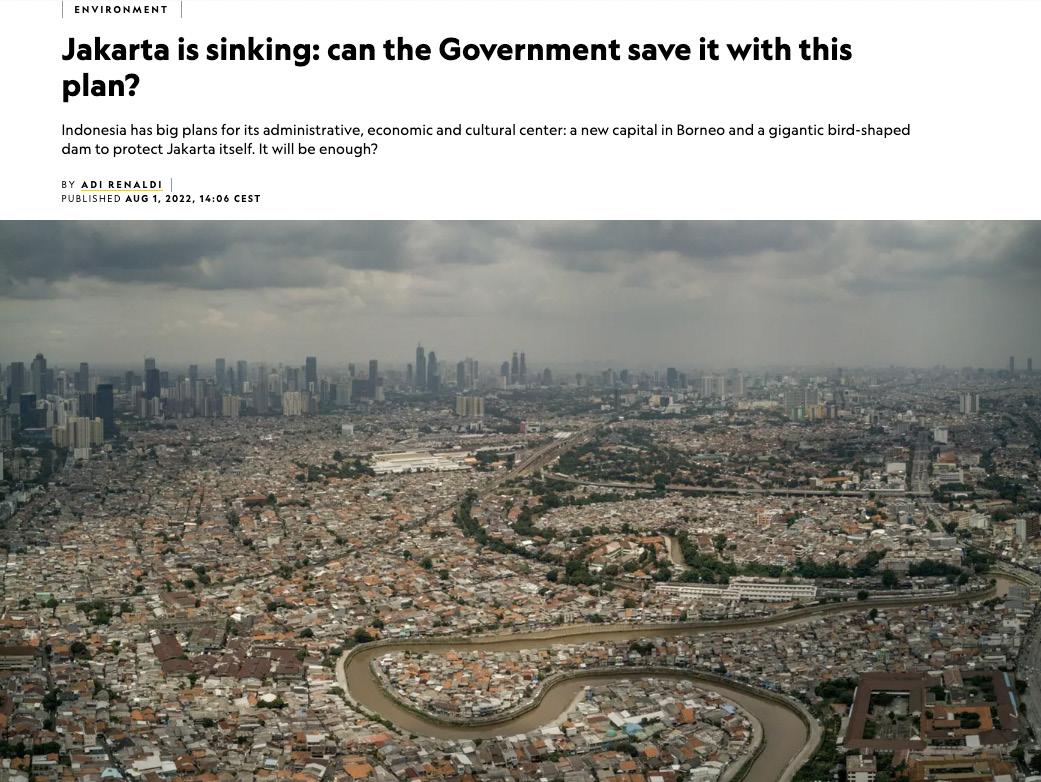

 1. Vladimir Zivojinovic featured in The New York Times, 2024
1. Vladimir Zivojinovic featured in The New York Times, 2024
THEVIIFOUNDATION.ORG/VII-ACADEMY
@viifoundation | @theviiacademy
WWW.THEVIIFOUNDATION.ORG/VII-ACADEMY
INFO@VII.ACADEMY
@viifoundation | @viiphoto | @theviiacademy
